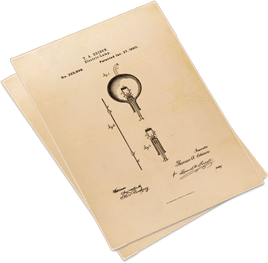A patent is a covenant between a government, representing the public interest, and the inventor of a novel and useful technology (the “invention”) by which, in return for publicly disclosing (“teaching”) the details of the invention, the inventor is granted exclusive property rights in the invention and its use for a specified period of time.
In the United States, a patentable technology can be a mechanical or electronic device or apparatus; or a living “manufacture,” such as an animal, plant, virus, or bacteria not produced by natural means; or a new composition of matter, such as a chemical compound, or a molecule, or chain of molecules comprising a gene; or a process or the product of a process, including a process defined in computer software; or, in certain instances, a design. A fundamental requirement of any patentable invention, however, is that it be both useful and novel.
A patent grants to the patent holder the right to exclude all others from manufacturing, selling, or using (“practicing”) the patented product or process for the duration of the patent’s term. For U.S. patent applications filed after June 8, 1995, the term of a patent is 20 years from the filing date of the application. (This is true of most other countries as well.)
U.S. patent rights are secured if, and only if, the Patent and Trademark Office (PTO) issues a patent. In general, international patent rights may only be secured by applying for patent protection in each country, separately. However, international agreements, such as the Patent Cooperation Treaty, and consolidated patent offices, such as the European Patent Office, aim to streamline the acquisition of patent rights throughout the world.


